
Adaptations are changes in an animal's body or behaviour that help it survive in winter.
Let's look at some familiar ones.
Adaptations to an Animal's Body:
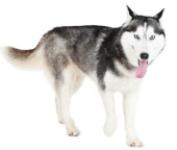
- Growing thicker fur
For example, many dog breeds, such as Border Collies and Huskies, grow thicker fur in the winter to keep warm in cold weather. Many animals do this, including bison, mountain goats, moose, musk oxen, and black bears.
Often mammals will moult their fur in late spring to early summer. Incoming guard hairs will be longer and protect the underfur. Additional underfur grows each fall and may consist of short, thick, often wavy hairs designed to trap air, which is a good insulator.
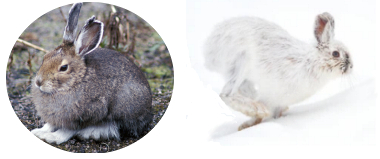
- Changing colour
Many animals change their fur colour in winter to help them camouflage themselves from predators. The snowshoe hare, for example, turns completely white in winter, making it very difficult to see.
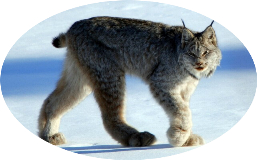
- Fur between the toes
Lynx and other cats, as well as wolves and other animals grow additional fur between their toes in winter to give them effectively larger feet to spread their weight over the snow.

- Freezing
Wood frogs tolerate winter by freezing! When winter arrives they hide under the leaf litter and begin to produce a special anti-freeze in their blood, made out of glucose and glycogen. As the temperature continues to drop, this 'antifreeze' is taken up into their cells. Inside each cell, the sugary liquid keeps the cells strong, and prevents ice crystals from forming which would kill them. When in this icicle-like state, their hearts stop beating and they stop breathing. As much as 70 per cent of the frog's body is actually frozen solid.
These frogs can survive all winter in this suspended animation, sometimes undergoing several cycles of freezing and thawing as the temperature changes. When the weather finally warms in spring, the frogs thaw and hop away!
Adaptations to an Animal's Behaviour:
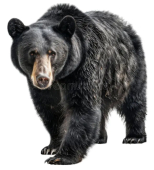
- Eating more
Many animals, especially those which hibernate or go into torpor, will increase their food intake in the fall to build up fat reserves for the winter.
- Sleeping more
These same animals will find a safe place to sleep during the coldest months of winter.
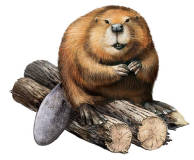
- Storing food
Some animals, like squirrels, bees and beavers, will create a cache of food to eat during the winter months. Beavers, for example, build dams to create ponds in which they store wood to eat. Their lodges allow them to exit and enter under the water, so they can access this food without ever surfacing in winter.
Other examples of behaviours that animals use to prepare for
or survive the winter months include:
- Deer mice huddling together to stay warm.
- Small mammals find insulation, protection and easier travel by living beneath the snow.
- Deer, elk, and bison follow each other through deep snow to save energy.
Find out how grade 9 students show what they know about adapting to an environment.
BACK
|





